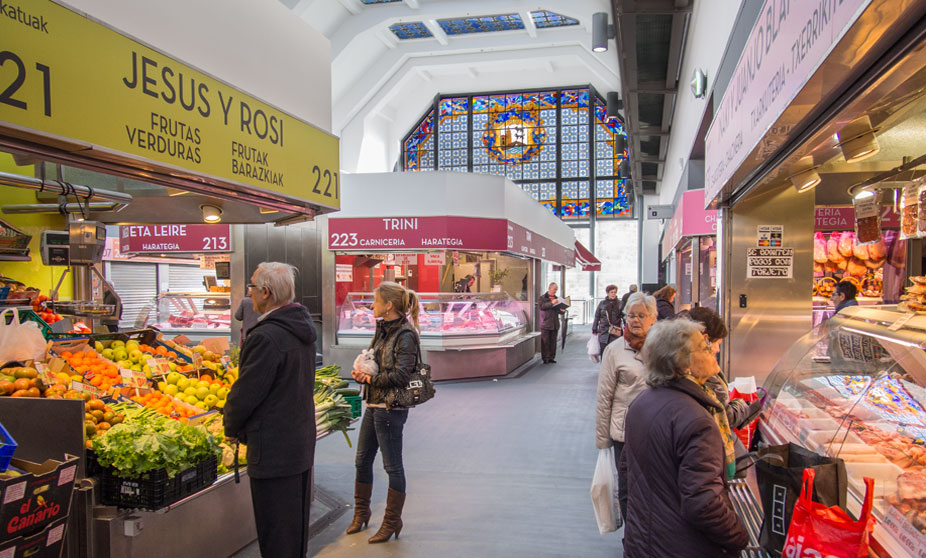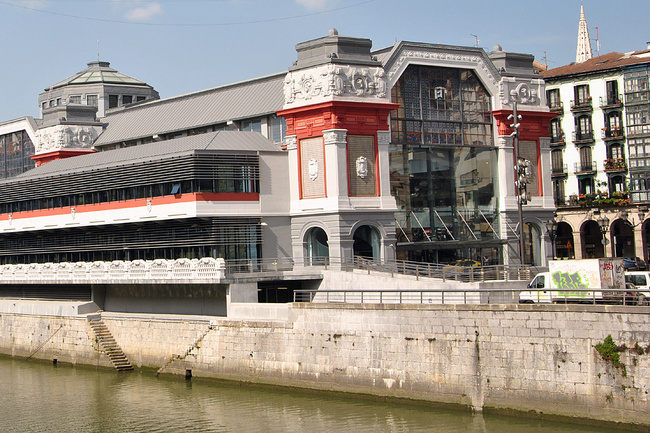
Markets are no longer what they were. Following in the wake of the culinary revolution forged in restaurants, they too have chosen to reinvent themselves. Madrid and Barcelona have some of the most significant examples of this new trend, although other cities, such as Valencia and Bilbao, are not far behind. We're no longer talking about a place to sell food, but of spaces for gastronomic experiences. Without renouncing their vocation as traditional markets, they now also include restaurants, book stores and even exhibition spaces.

Ribera Market, located beside the river estuary in Bilbao, is a reference in terms of shopping for the whole of Biscay. One of its many merits is to have been recognized in 1990 as the most complete municipal food market by the Guinness Book of Records, at that time being the largest in terms of traders and stalls and the biggest covered market as regards space in the whole of Europe, with a surface area of 10,000 square metres. Refurbishment work began en mid-2009 aimed at renewing its structure, stalls and services in order to remain a reference for shoppers in the 21st century. Not in vain, life and business have never stopped in this space where more than 60 merchants manage to provide customers with the finest produce at the best price: meat, fruit, shellfish, cheeses, cooked meats, frozen food, mushrooms and fungi...
 - Copy 1.jpg)
A complex of stands and the arcades of the lower levels of the buildings served as a market in the Ribera of Bilbao for centuries, when this area was an urban centre, with City Hall and the Consulate, right in front of San Antón. A metal market pavilion was built at the end of the 19th Century. It was an example of what was called ‘cast-iron architecture’, in use up through the mid 1920s.
After several proposals, in which even covering the Estuary was proposed, an ambitious project was developed to substitute the old market, then quite rundown. The project by Pedro Ispizua, Municipal Technician, was enlarged and improved from the time of its drawing in 1927 up to its construction in 1930. Issues such as monumentality derived from its representational character are combined with functional aspects and hygienic concerns. Ispizua takes on a nearly rationalist language in this project, in accordance with the functional needs of the buildings and construction issues. His plans include similarities with central-European architecture, more or less moving away from earlier somewhat regionalist views.
A voluminous, modern market with clearly monumental and representative ideals was built to replace the old ‘cast-iron’ market from the end of the 19th Century. Concrete replaced cast-iron to form a grand vessel with ample interior space for all of the stands. With its marked personality (volume, form, details…) the building has become an integral part of the image of this historic enclave along the Estuary.